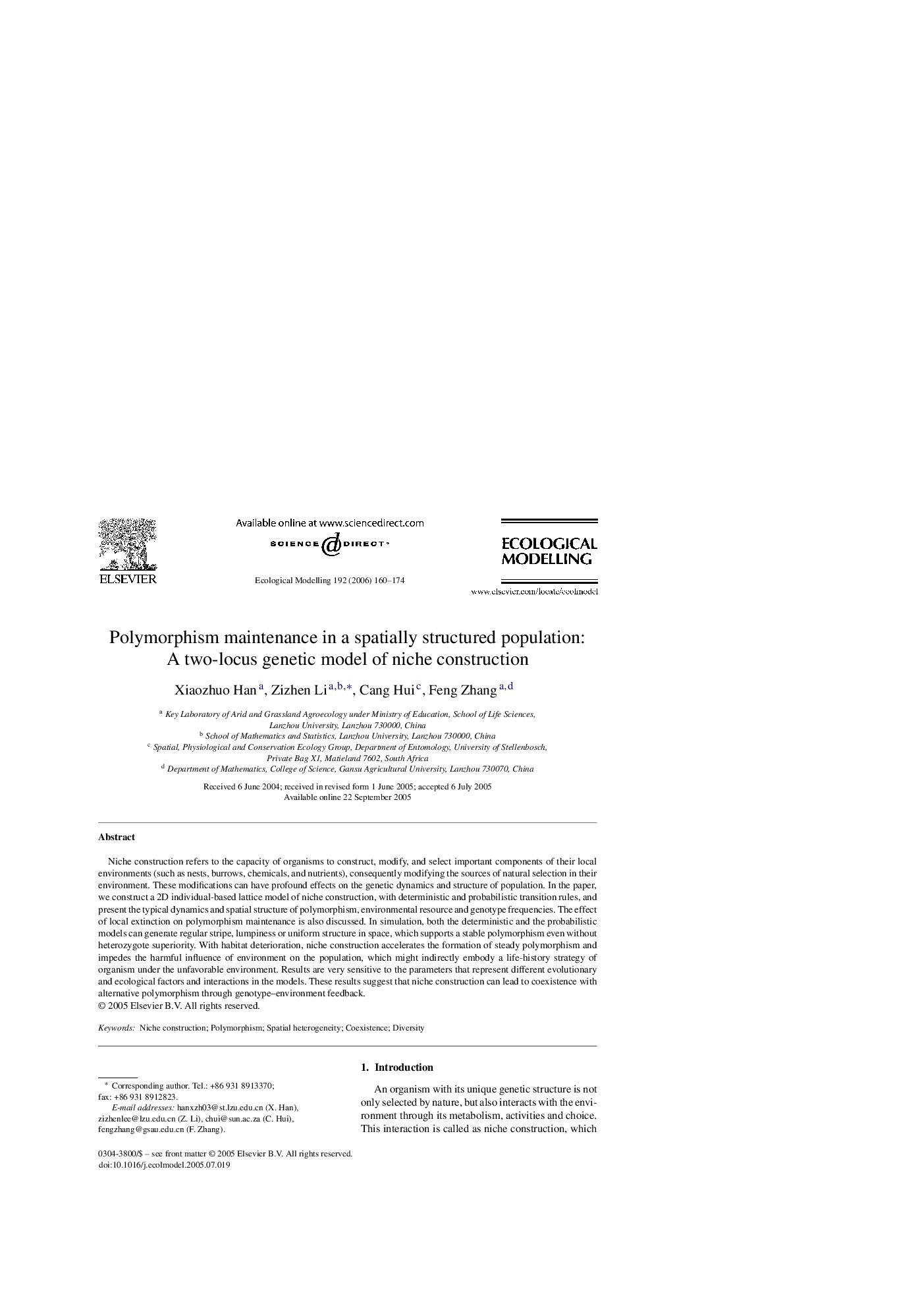| کد مقاله | کد نشریه | سال انتشار | مقاله انگلیسی | نسخه تمام متن |
|---|---|---|---|---|
| 4379131 | 1617569 | 2006 | 15 صفحه PDF | دانلود رایگان |

Niche construction refers to the capacity of organisms to construct, modify, and select important components of their local environments (such as nests, burrows, chemicals, and nutrients), consequently modifying the sources of natural selection in their environment. These modifications can have profound effects on the genetic dynamics and structure of population. In the paper, we construct a 2D individual-based lattice model of niche construction, with deterministic and probabilistic transition rules, and present the typical dynamics and spatial structure of polymorphism, environmental resource and genotype frequencies. The effect of local extinction on polymorphism maintenance is also discussed. In simulation, both the deterministic and the probabilistic models can generate regular stripe, lumpiness or uniform structure in space, which supports a stable polymorphism even without heterozygote superiority. With habitat deterioration, niche construction accelerates the formation of steady polymorphism and impedes the harmful influence of environment on the population, which might indirectly embody a life-history strategy of organism under the unfavorable environment. Results are very sensitive to the parameters that represent different evolutionary and ecological factors and interactions in the models. These results suggest that niche construction can lead to coexistence with alternative polymorphism through genotype–environment feedback.
Journal: Ecological Modelling - Volume 192, Issues 1–2, 15 February 2006, Pages 160–174